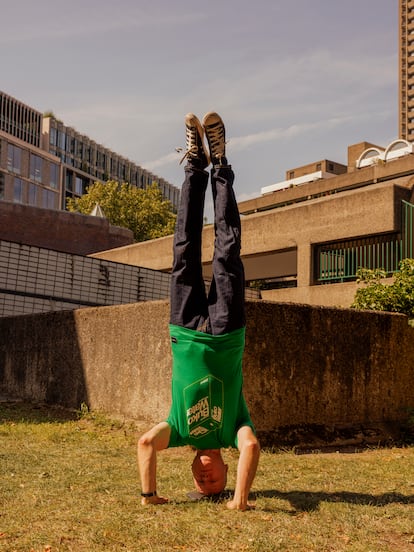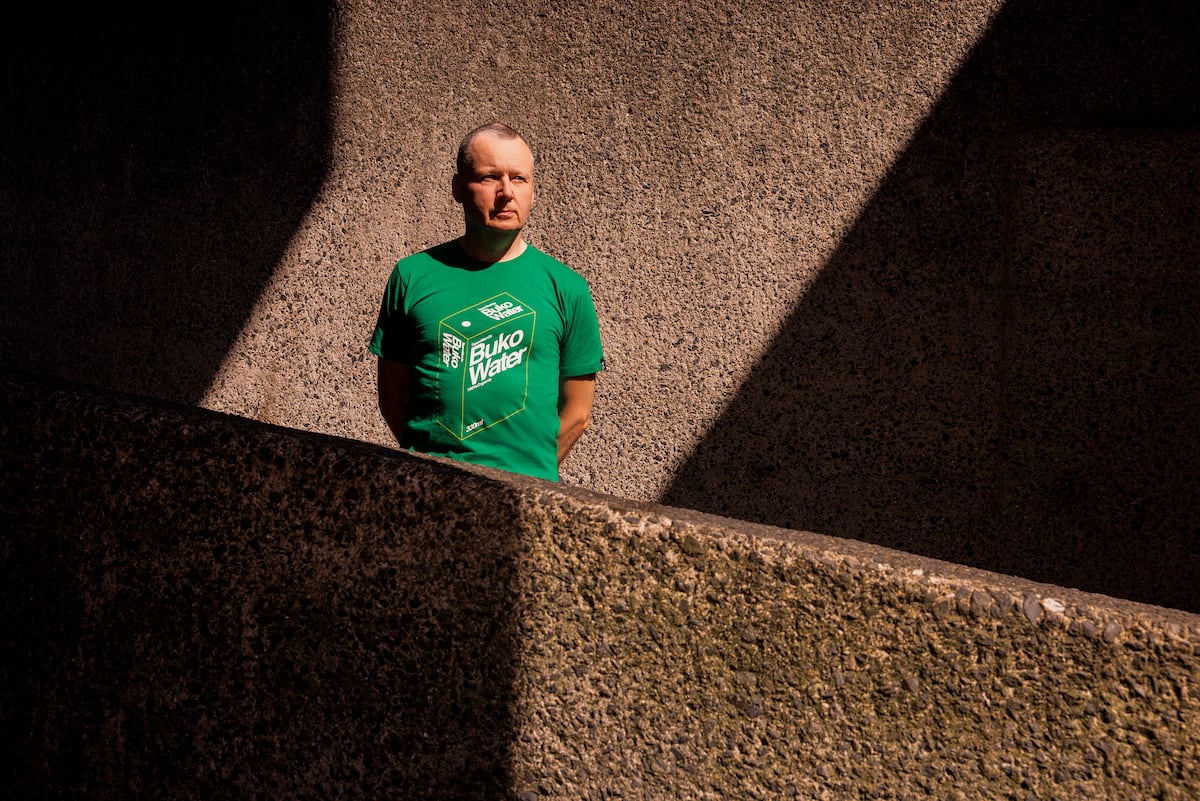Stewart Home, 63, is a legend of British counterculture: a director, writer, playwright, and activist, famous for his pulp novels that reflected 1970s London — populated by hooligans, skinheads, and hustlers — and for being someone who speaks bluntly about any subject he considers worth dissecting.
His latest work is a book whose title leaves no room for ambiguity: Fascist Yoga (Pluto Press). “Originally, the book was called Fascist Yogis and New Age Frauds: Physical Culture with a Fakir Twist. However, the consensus among Pluto’s sales and publishing team was that we needed the words fascist and yoga in the main title to make sure potential readers understood what the book was about,” says Home, whose most celebrated work is perhaps Tainted Love, in which he narrates 1960s London through the diaries left behind by his mother, a sex worker and drug addict.
In Fascist Yoga, the author reviews the origins of yoga’s introduction to the West up to the present day. He does so with the eye of a skeptic who has heard the same story far too many times.
“Modern Western yoga is 19th-century European gymnastics with a sprinkling of orientalist fairy dust,” he says. “It’s about 120 years old and very different from the meditative yoga practiced in ancient India, although some people like to confuse the two. I’m not the only one who argues that modern yoga has its roots in European gymnastics; there’s academic discourse and a good number of books and articles on the subject.”
Home continues: “I already knew a bit about fascist ideologies and fascist countercultures, so it didn’t seem strange to me. I was aware of fascists interested in tarot and other forms of spirituality and religion, from paganism to mainstream branches of Christianity, including the Catholic and Orthodox churches, and especially their more traditionalist factions. So I did some research, and I was surprised to find not only that there were more fascist yogis and white supremacists, but that some of them had played a key role in spreading modern yoga during the first half of the 20th century.”
The writer attended his first yoga class in 2009 and even then noticed something was off: “I was horrified by the instructor talking about chakras and other New Age nonsense while teaching the class,” he recalls.
 Home, pictured in Barbican, London, upside down.Manuel Vázquez
Home, pictured in Barbican, London, upside down.Manuel Vázquez
In the book, Home delves into the nooks and crannies of yoga’s history: from the curious reinvention of the movement in early 20th-century California, through the Nazis, and up to the mouthpieces of the American alt-right, tracing a straight line that leads to Robert F. Kennedy Jr., current Secretary of Health in Trump’s government, and his court of anti-vaxxers who, in the name of wellness, are dismantling the U.S. healthcare system.
In Fascist Yoga one stumbles upon characters as delirious as the Frenchwoman Maximiani Julia Portas, better known as Savitri Devi, who believed Hitler was an incarnation of a Hindu god and mixed paganism, ecology, and occultism. Readers also discover the ghosts that emerged from the intersection of Western mythology and Hindu nationalism in Modi’s India — in a spiral that pushes one to wonder how on earth something as seemingly harmless as the practice of yoga has served as a breeding ground for some of the most extreme ideologies.
Unsurprisingly, the book has angered many, amused quite a few others, and enlightened some. “Some yoga enthusiasts have gotten very upset and write or speak about the book as if the title were Yoga Is Fascist instead of Fascist Yoga, with a subtitle that makes it clear there are also other currents in yoga,” says Home. “Of course, I’m not saying that all yoga is fascist or that all yogis are fascists, but there are yoga fans who want to pretend that’s what I’m saying so they can dismiss me and protect their subculture from any critical approach. In fact, I think that misinformation around health issues is saturated with occultism. And that’s more problematic than the link between modern postural practice and the far right.”
Sign up for our weekly newsletter to get more English-language news coverage from EL PAÍS USA Edition

